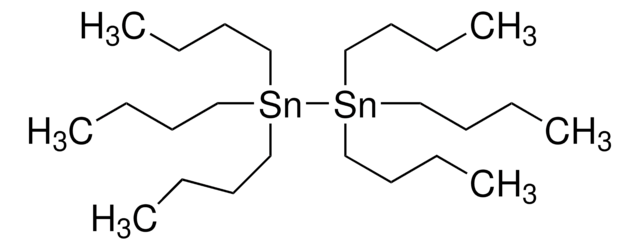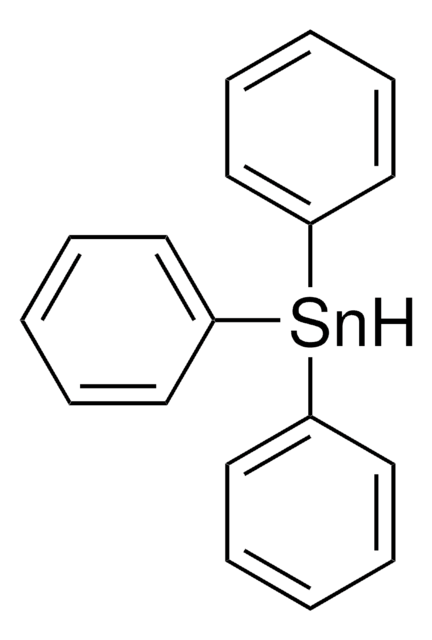348104
Triphenyltin hydroxide
Synonym(s):
Fentin hydroxide, Hydroxytriphenylstannane, NSC 113243
About This Item
Recommended Products
Quality Level
mp
124-126 °C (lit.)
SMILES string
O[Sn](c1ccccc1)(c2ccccc2)c3ccccc3
InChI
1S/3C6H5.H2O.Sn/c3*1-2-4-6-5-3-1;;/h3*1-5H;1H2;/q;;;;+1/p-1
InChI key
BFWMWWXRWVJXSE-UHFFFAOYSA-M
Application
Reactant involved in synthesis of:
- (E)-(Nitrophenyl)propenoic acid organotin(IV) carboxylates with antitumor activity
- Triorganotin chrysanthemumates for larvicidal studies
- Polynuclear organotin(IV) carboxylates containing ferrocenyl moieties for antitumor investigation
- Organotin(IV) aminophenylacrylate complexes
- 4-Biphenylcarboxylic acid derivatives for in vitro cytotoxicity studies
Signal Word
Danger
Hazard Statements
Precautionary Statements
Hazard Classifications
Acute Tox. 2 Inhalation - Acute Tox. 2 Oral - Acute Tox. 3 Dermal - Aquatic Acute 1 - Aquatic Chronic 1 - Carc. 2 - Eye Dam. 1 - Repr. 2 - Skin Irrit. 2 - STOT RE 1 - STOT SE 2 - STOT SE 3
Target Organs
Respiratory system
Storage Class Code
6.1A - Combustible acute toxic Cat. 1 and 2 / very toxic hazardous materials
WGK
WGK 3
Flash Point(F)
Not applicable
Flash Point(C)
Not applicable
Personal Protective Equipment
Regulatory Information
Choose from one of the most recent versions:
Certificates of Analysis (COA)
Don't see the Right Version?
If you require a particular version, you can look up a specific certificate by the Lot or Batch number.
Already Own This Product?
Find documentation for the products that you have recently purchased in the Document Library.
Our team of scientists has experience in all areas of research including Life Science, Material Science, Chemical Synthesis, Chromatography, Analytical and many others.
Contact Technical Service












